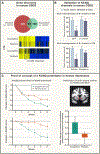Neurobiological basis of stress resilience
- PMID: 38795707
- PMCID: PMC11189737
- DOI: 10.1016/j.neuron.2024.05.001
Neurobiological basis of stress resilience
Abstract
A majority of humans faced with severe stress maintain normal physiological and behavioral function, a process referred to as resilience. Such stress resilience has been modeled in laboratory animals and, over the past 15 years, has transformed our understanding of stress responses and how to approach the treatment of human stress disorders such as depression, post-traumatic stress disorder (PTSD), and anxiety disorders. Work in rodents has demonstrated that resilience to chronic stress is an active process that involves much more than simply avoiding the deleterious effects of the stress. Rather, resilience is mediated largely by the induction of adaptations that are associated uniquely with resilience. Such mechanisms of natural resilience in rodents are being characterized at the molecular, cellular, and circuit levels, with an increasing number being validated in human investigations. Such discoveries raise the novel possibility that treatments for human stress disorders, in addition to being geared toward reversing the damaging effects of stress, can also be based on inducing mechanisms of natural resilience in individuals who are inherently more susceptible. This review provides a progress report on this evolving field.
Keywords: adaptation; blood-brain barrier; chronic social defeat stress; coping; depression; nucleus accumbens; post-traumatic stress disorder; prefrontal cortex; stress susceptibility; transcriptomics.
Copyright © 2024 Elsevier Inc. All rights reserved.
Conflict of interest statement
Declaration of interests The authors declare no competing interests
Figures





References
-
- Turner CA, Khalil H, Murphy-Weinberg V, Hagenauer MH, Gates L, Tang Y, Weinberg L, Grysko R, Floran-Garduno L, Dokas T, Samaniego C, Zhao Z, Fang Y, Sen S, Lopez JF, Watson SJ Jr, Akil H. The impact of COVID-19 on a college freshman sample reveals genetic and nongenetic forms of susceptibility and resilience to stress. Proc Natl Acad Sci U S A 2023. Dec 5;120(49):e2305779120. - PMC - PubMed
Publication types
MeSH terms
Grants and funding
LinkOut - more resources
Full Text Sources
Medical
Miscellaneous

